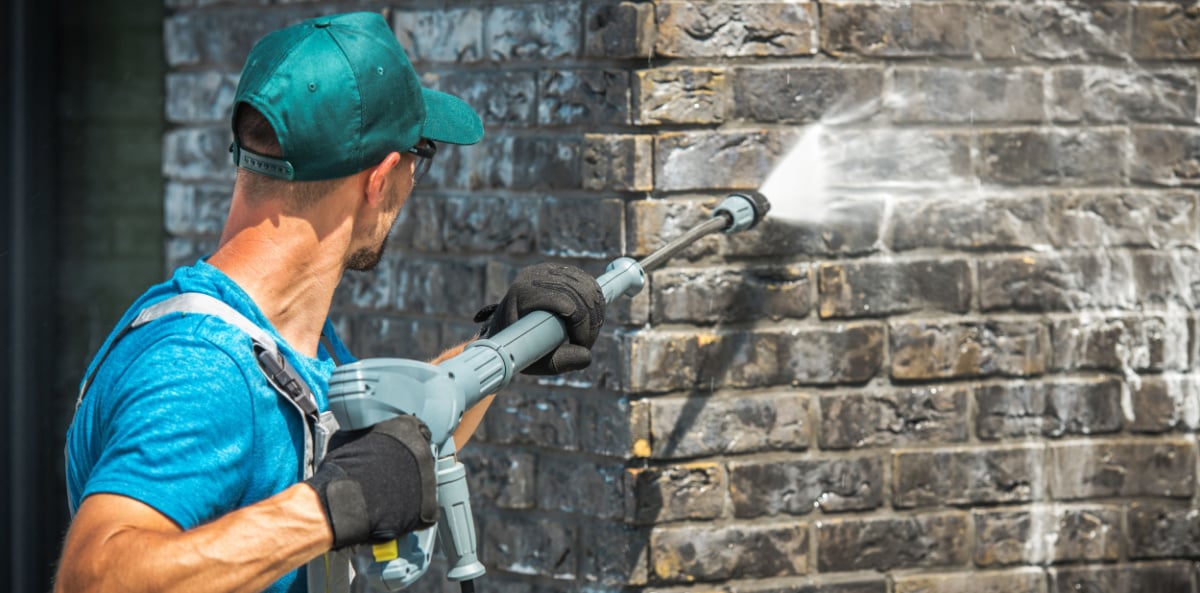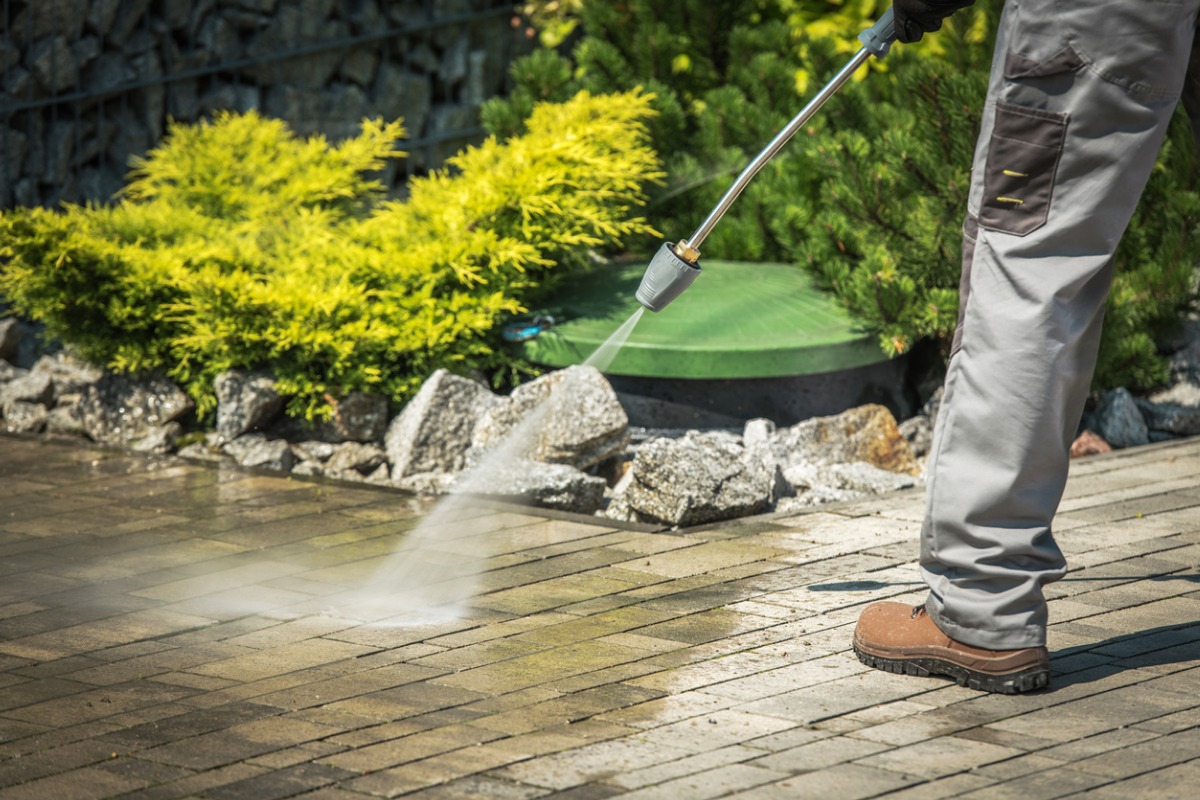Revitalize Your Home: The Ultimate Guide to Pressure Washing
Stress washing is an invaluable device for property owners aiming to bring back the visual charm and long life of their buildings. To navigate these intricacies and achieve optimum results, it is vital to explore the basic elements of stress washing, including sensible guidance on ensuring and attending to usual stains safety and security throughout the process.
Comprehending Stress Laundering
Pressure washing is an effective cleansing method that uses high-pressure water spray to get rid of dirt, gunk, mold and mildew, and various other impurities from various surfaces. This method is specifically effective on hard surfaces like driveways, walkways, decks, and house siding, where typical cleaning methods may fail. By employing specialized tools that generates high-pressure streams of water, stress washing can permeate deeply right into surfaces, properly displacing and cleaning away persistent particles.
The process is not just efficient however additionally eco-friendly, as it often relies solely on water, decreasing the need for severe chemical cleaners. Additionally, stress cleaning can improve the aesthetic appeal of buildings, keeping their worth and extending the life expectancy of surfaces by preventing degeneration triggered by pollutants.

Selecting the Right Equipment
Choosing the ideal equipment is critical for achieving ideal outcomes in stress cleaning. Gas units, on the other hand, supply greater stress and circulation rates, making them optimal for bigger work such as cleaning driveways or exterior siding.
Following, take into consideration the pressure rating, determined in pounds per square inch (PSI) For light-duty tasks, a pressure washer with 1,300 to 1,600 PSI is enough, while medium-duty work typically require 1,600 to 2,500 PSI. Durable jobs might demand machines going beyond 2,500 PSI.
Additionally, the flow rate, measured in gallons per minute (GPM), influences cleaning up effectiveness (Pressure Washing Lockhart). A higher GPM enables for quicker cleaning however may require much more powerful equipment
Techniques for Effective Cleaning

The technique of overlapping strokes is essential for even protection. Additionally, preserving a regular distance from the surface area, generally 12 to 18 inches, permits for effective application without triggering injury.
Utilizing the right nozzle is also necessary. A wide-angle nozzle is ideal for larger locations, while a narrow nozzle can target persistent dust or grime. Furthermore, using a sweeping movement instead than a stationary spray assists to avoid concentrated locations of pressure, which might bring about surface damages.

Tackling Common Spots
When it involves maintaining the appearance of exterior surfaces, resolving usual stains properly is important for lengthening their life-span and improving aesthetic appeal. Various surfaces, including plastic, concrete, and wood, can build up spots from organic products, oils, and toxic wastes, necessitating a targeted approach.
For oil visit our website stains, a combination of degreasers and pressure cleaning can yield outstanding outcomes. Use the degreaser to the discolored location, permitting it to pass Click This Link through before utilizing a stress washer to eliminate the residue. Organic spots, such as mold or algae, often call for a service containing bleach or a devoted mold remover, followed by stress cleaning to bring back the surface's original look.
Corrosion spots, generally located on steel surfaces, may necessitate customized corrosion eliminators. Apply the product and scrub the area prior to stress washing to remove any type of remaining staining. It is necessary to evaluate any kind of cleansing service on a little, unnoticeable area first to avoid damage.
Safety Tips and Best Practices
Making certain safety and security while stress washing is paramount, as the high-pressure water can pose substantial threats otherwise taken care of appropriately. To secure yourself and others, constantly use appropriate individual safety devices (PPE), including safety and security goggles, handwear covers, and tough footwear. This gear will certainly shield you from flying particles and the possibility for injury.
Before beginning, check the pressure washing machine for any leaks or damaged components. Familiarize on your own with the tools's manual to comprehend its procedure and security functions. In addition, guarantee the location you are operating in is without challenges which any type of electric links are secure from water exposure.
When operating the pressure washer, preserve a risk-free range from surface areas and stay clear of intending the nozzle at individuals, pets, or delicate items. Utilize the right nozzle for the job, as various nozzles generate differing spray patterns and stress degrees. Be mindful of your surroundings: web safe loose products, watch for electric lines, and prevent working in wet problems that might lead to falls or slips.
Conclusion
In final thought, pressure washing offers as an important tool for property owners looking for to improve home looks and durability. By understanding the details of devices selection, reliable cleansing methods, and common discolor removal, the potential for renewing one's home comes to be evident.
Pressure washing is a powerful cleansing approach that utilizes high-pressure water spray to remove dirt, grime, mold, and various other pollutants from different surfaces. By using specific equipment that creates high-pressure streams of water, stress washing can pass through deeply right into surfaces, properly displacing and washing away persistent particles.
Nevertheless, it is important to recognize that stress washing needs a certain degree of skill and understanding to prevent harmful surface areas. Softer materials like timber or repainted surfaces necessitate a reduced pressure establishing to protect against damage, whereas concrete or block surfaces can withstand greater stress levels.
Organic discolorations, such as mildew or algae, commonly require a service having bleach or a committed mold and mildew cleaner, adhered to by pressure washing to recover the surface area's original look. - Pressure Washing Lockhart